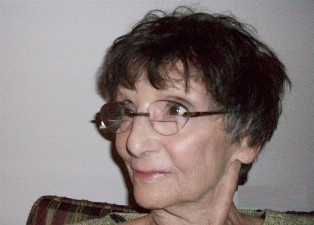Let’s welcome back Jane Remer, Dewey21C’s regular guest blogger. She’s posted a wonderful entry that touches upon the human details of what makes for good professional development of teaching artists, not to mention teachers, administrators, and other school personnel.
To read Jane’s previous entries, all you have to do is search using the little box to the right and voila! –RK
*********************************************************************************************************
I have said for many years that some of the best professional development occurs when experienced classroom teachers and visiting artists sit down together to figure out how to make authentic and profitable connections between an arts course of study and the general curriculum. Back in the days (sixties to early seventies) I was asked to create what the Feds called an innovative and exemplary artists as resources program for the then Lincoln Center Student Program (the precursor of the current Lincoln Center Institute). Over the years, we identified, developed, coached and monitored close to several hundred professional artist musicians, composers, dancers and actors whose job it was to collaborate with classroom teachers in the preparation of students for a whole panoply of Lincoln Center performances both at the Center and in school classrooms and auditoriums.
The challenge then remains the same today: how do you build understanding and ultimately good practice that will encourage student learning in and through the arts between artists, most of whom have little knowledge of pedagogy, child development and the regularities of schooling and classroom teachers, most of whom have little knowledge of the performing (in this case) arts, their history, and the artistic process. The answer has been very slowly, and not very well, with a few stunning exceptions when arts specialists join the discussion and the team, when classroom teachers have an arts background, or when artists have public school teaching experience.
Most of the professional development for artists continues to be conducted by other artists, with an occasional nod to classroom teachers and school-based arts educators. The problem with this approach has been apparent for years: we expect to build “effective” classroom partnerships by dealing mostly with only 50 percent of the team – the artist. This usually results in the artist displacing the classroom teacher or arts educator who retreats to the sidelines, afraid and unequipped to figure out ways to collaborate. Very few artists of the hundreds I have known and worked with can work at the top of their game under these conditions, so connections tend to go un-made and learning in both the arts and other subjects suffers. There are many ways to change the lopsided paradigm, most of them productive if time-consuming and expensive. I was reminded the other day of one of the strategies we used regularly “back in the day” which I now share with you.
An artist new to a year-long residency was struggling with school regularities, classroom management and appropriate methods of reaching and teaching certain principles and skills to the students. When we brought two of the experienced teachers in the program together with the artist who was eager for the discussion, the entire dynamic of the conversation and the focus of the discussion changed, immediately. The artist posed a question or two about classroom practice, and the classroom teachers responded abundantly, articulately and with stunning clarity. The balance of power (yes, power) had shifted, for the moment, from the artist (who is deferred to in most residencies I see these days) to the two teachers who gave us specific classroom example after example of what might be done, how, when and under what circumstances. The artist took copious notes jotting down the pearls of wisdom, raising an occasional question, and finally coming up with a tentative plan to move the work and the program in clearer and now more consensus-built direction. The discussion had ranged from management, to method, to content, to structure and goals and ways of bringing the arts and the other subjects into unforced alignment.
At the end of almost ninety minutes (the teachers were “covered” with subs), we all broke into applause and bravos. We agreed it was probably one of the best P.D. sessions we’ve witnessed and been a part of in years. And, it cost practically nothing extra. It is likely that this “mere” hour and a half will change the course of the work for the rest of the school year, especially if we stick to our practice of meeting as a full team every month or so.
Moral of the story: In a classroom partnership leadership needs to be evenly distributed and this includes balancing teachers teaching artists and artists teaching teachers, to the enormous benefit of their students (and their parents, when you can include them in the process.)
Jane Remer
December 10, 2009
***********************************************************************************************************
JANE REMER’S CLIFFNOTES
We are at another rocky precipice in our history that threatens the
survival of the arts in our social fabric and our school systems. The
timing and magnitude of the challenges have prompted me to speak out
about some of the most persistent issues in the arts education field
during the last forty-plus years.
My credo is simple: The arts are a moral imperative. They are
fundamental to the cognitive, affective, physical, and intellectual
development of all our children and youth. They belong on a par with
the 3 R’s, science, and social studies in all of our elementary and
secondary schools. These schools will grow to treasure good quality
instruction that develops curious, informed, resilient young citizens
to participate fully in a democratic society that is in constant flux.
I have chosen the title Cliff Notes for this forum. It serves as
metaphor and double entendre: first, as short takes on long-standing
and complicated issues, and second, as a verbal image of the
perpetually perilous state of the arts as an essential part of general
public education. I plan to focus on possible solutions and hope to
stimulate thoughtful dialogue on-line or locally.
************************************************************************************************************  Jane
Jane
Remer has worked nationally for over forty years as an author,
educator, researcher, foundation director and consultant. She was an
Associate Director of the John D. Rockefeller 3rd Fund’s Arts in
Education Program and has taught at Teachers College, Columbia
University and New York University. Ms. Remer works directly in and
with the public schools and cultural organizations, spending
significant time on curriculum, instruction and collaborative action
research with administrators, teachers , students and artists. She
directs the Capezio/Ballet Makers Dance Foundation, and her
publications include Changing Schools Through the Arts and Beyond
Enrichment: Building Arts Partnerships with Schools and Your Community.
She is currently writing Beyond Survival: Reflections On The Challenge
to the Arts As General Education. A graduate of Oberlin College, she
attended Yale Law School and earned a masters in education from Yale
Graduate School.
*************************************************************************************************************




Bravo, Jane! To overlook the great resources classroom teachers and arts specialists bring to an arts residency is practically criminal. The majority of artists I’ve worked with would welcome such professional development as you describe, and I believe most teachers would enjoy the opportunity to truly partner with their artist colleagues. And I concur, when the school administration is able to make the time for such PD, EVERYONE benefits.
Good for you, Jane! We do have long memories of past triumphs and good practices. I have yet to meet the artist, principal, or teacher who is not willing to put together the “team” to meet and share and mutually “develop” each other. Too often, the exigencies of time are allowed to get in the way. Principals can work out the time for meeting; they need to be asked. Teachers can be “released” to meet with artists. But not at the last minute. Organizations need to be ready to pay for the artist’s time to meet with teachers and to help set the agenda: not to go over the bell schedule, not to “discuss” the pre packaged lesson plan, not to try to figure out how the artist can “illustrate” the social studies unit, but to DISCOVER where common interests, bonds, responsibilities and concerns are and PLAN out of each one’s strengths as artist, teacher, role model, demonstrator, etc. Too many “residencies” are not about living and learning together; too many rely on tried and sometimes true “lesson plans” handed down from somewhere to someone. We can help artists and teachers find the real common ground in the classroom as long as the arts are central and not just ornament to learning, and as long as the teacher assumes pedagogical responsibility to support and complement what the artist brings to his/her students. One more thing (isn”t there always one more?): PD itself has become too reliant on formulae for success. Let’s take a good look at the landscape peppered with different kinds of PD and see what designs have impact/desired outcomes for the participants and how the PD insights, techniques, tools, understandings, tricks, trades, and so on are internalized and practiced at/in the learning sites. (Not every learning site is a school classroom! ) Meanwhile, let’s all keep on keeping on! Happy Holidays! Carol
I completely agree. At the Guggenheim, this fall we invited three classroom teachers to lead a workshop for our teaching artists about developmental stages and diagnostic tools for learning about a group of students. We broke into small groups, and each teacher spoke about students in a specific grade, and then engaged in a conversation with teaching artists. The teaching artists were referencing these conversations a month later, as they planned their projects. Programmatically, it was important to us both that the teaching artists learn how to learn about a new group of students quickly, AND that they think about the great strengths and knowledge of their partner teachers, and how they might learn from them. We think both goals were achieved, and hope to have similar workshops in the future.